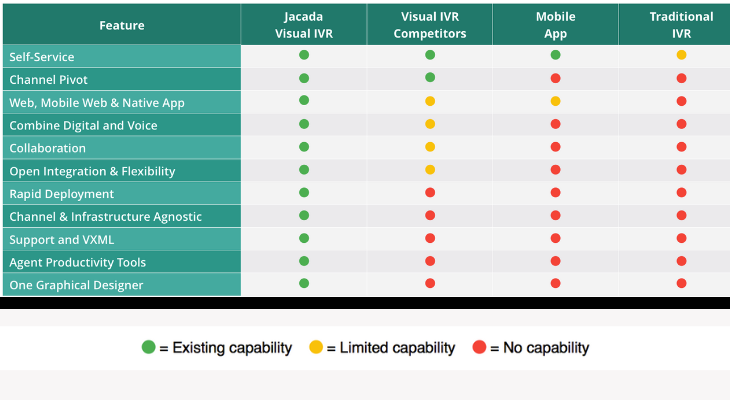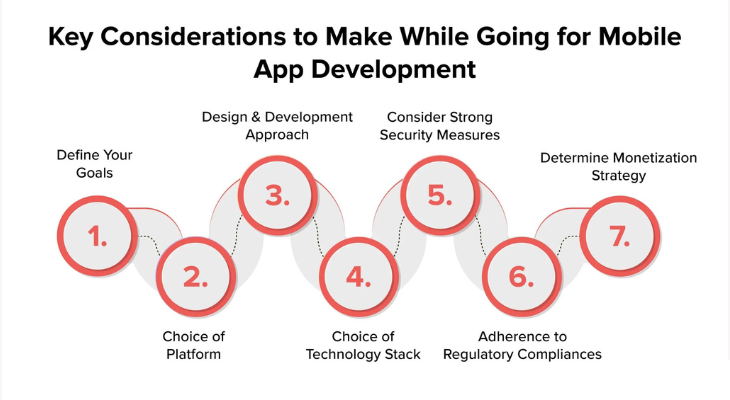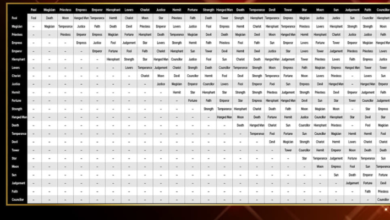The Mobile App Development Scene in 2023: Future App Developers

Mobile app Development are becoming an essential part of our everyday lives in today’s digitally connected world, completely changing the ways in which we interact, communicate, and transact business. The field of mobile app development has become a vibrant and profitable professional path as a result of the ongoing growth in demand for creative and captivating mobile applications.
This thorough guide will give you the knowledge and resources you need to navigate the mobile app development landscape in 2023 if you’re an aspiring app designer looking to make your mark in this fascinating sector.
Table of Contents
ToggleDefinition of Mobile App Development

The process of developing software for mobile platforms, including wearables, tablets, and smartphones, is known as mobile app development. These applications can be cross-platform, which means they can operate on several operating systems using a single codebase, or native, which means they are made especially for a certain operating system like iOS or Android.
Importance of Mobile App Development
In today’s digital environment, mobile app development is becoming more and more significant. This is due to a few factors:
- The use of mobile apps is surging: A increasing number of people are utilizing mobile apps. In actuality, there will be more than 3.5 billion smartphone users globally in 2023, and this figure is predicted to rise in the upcoming years.
- Businesses need mobile apps: Businesses may gain a lot from mobile apps, including better consumer interaction, elevated brand recognition, and more revenues.
- Mobile apps are an effective tool for sharing information and facilitating communication: Mobile apps can be used to distribute information, interact with clients, and grant access to services.
Benefits of Mobile App Development
Creating a mobile application has several advantages. Among the most notable advantages are:
- Enhanced brand recognition: A well-made mobile app can aid in raising the visibility and awareness of your business.
- Enhanced consumer engagement: You may establish relationships and loyalty with your customers by having a direct channel of communication with them through a mobile app.
- Enhanced sales: By giving users a quick way to make purchases of goods or services, a mobile app can increase sales.
- Better customer service: Self-service resources like tutorials, FAQs, and troubleshooting instructions can be made available to users via a mobile app.
- Enhanced worker productivity: By giving workers access to the data and resources they require to perform their jobs, a mobile app can help increase worker productivity.
- Lower expenses: By doing away with the requirement for physical shops or paper marketing materials, a mobile app can help cut expenses.
- Competitive edge: Having a mobile app might offer you a big advantage over your rivals in the cutthroat business world of today.
Identifying the Best Mobile App Ideas for 2023
Any mobile app’s ability to solve a prevalent issue or fulfill a real need is what makes it successful. Take into account the following elements to determine the most potential app concepts for 2023:
- Determine unmet demands and market gaps: Examine current apps to find areas that could use innovation or improvement.
- Recognize the preferences and problems of the user: To learn about the requirements, inclinations, and annoyances of your target market, conduct market research.
- Utilize cutting-edge trends and technologies: To produce innovative apps, stay current on the most recent developments in mobile app development, including virtual reality, augmented reality, and artificial intelligence.
Understanding the Latest Mobile App Trends and Technologies
The world of mobile app development is always changing as new trends and technology appear at a rate never seen before. It’s critical to comprehend these developments and how they can improve the functionality of your app if you want to stay on top of the game.
- Frameworks for cross-platform development: React Native and Flutter, for example, let developers create apps that function flawlessly on several platforms, cutting down on expenses and development time.
- Cloud-based app development: Tools and infrastructure for creating safe, scalable mobile apps are made available by cloud platforms such as Amazon Web Services (AWS) and Google Firebase.
- Integration of augmented reality (AR) and virtual reality (VR): These two technologies are revolutionizing the way people use mobile apps by offering engaging and interactive experiences.
Exploring the Competitive Landscape of Mobile Apps

It is imperative that you conduct a thorough analysis of the mobile app industry competition before beginning the development process. It includes:
- Finding direct and indirect rivals: Examine apps that solve issues or provide features that are comparable to yours.
- Analyzing their advantages and disadvantages: Examine the features, UI, and general experience that rival apps offer.
- Putting your app in a differentiating position: Determine what special features or strategies will set it apart from the competition.
Navigating the Mobile App Development Process: A Step-by-Step Guide

After determining which app idea has the most potential and carrying out extensive market research, it’s time to start the thrilling process of developing a mobile app. There are multiple crucial steps in this process:
Planning and Ideation: Establishing the Groundwork for Success
- Developing Your Mobile App Idea: Clearly state the goal, intended user base, and essential features of your application.
- Identifying the Needs of the Target Audience: Recognize the characteristics, habits, and problems of your target audience.
- Clearly Defined Objectives and Goals: Set quantifiable, precise objectives for your app, such as revenue generating, user retention, or engagement.
Design: Creating an Experience That’s User-Friendly
- User Interface (UI) Design: Make an interface that complements your app’s identity and user preferences while also being aesthetically beautiful and easy to use.
- User Experience (UX) Design: By refining navigation, interaction, and feedback systems, you can make sure that the user journey is smooth and engaging.
Development: Bringing Your App to Life
- Choosing the Best Development Platform: Based on the complexity of your program and the platforms it is intended for, select the best development platform, such as Native, Cross-Platform, or Hybrid.
- Selecting the Appropriate Development Tools and Programming Language: For your selected platform, choose the proper development tools (like Android Studio or Xcode) and programming language (like Java, Swift, or Kotlin).
- Putting Features and Functionalities into Practice: Write the code for your app’s essential features and functions, making sure to follow best practices and quality standards.
Testing: Ensuring Quality and Reliability
- Finding and Correcting Bugs and Glitches: To find and correct software errors that can impair the user experience, carry out extensive testing.
- Optimal User Experience through Performance Testing: Test the application’s responsiveness and scalability in a variety of usage scenarios.
- Input Collection from Beta Testers: To pinpoint areas in need of development and enhance the overall user experience of the app, collect input from a small number of beta testers.
Deployment: Putting Your App in the Public Eye
- Publicizing Your App on App shops: Follow the rules and specifications of app shops such as Google Play and Apple App Store when submitting your app.
- Making Certain That Different Devices and Operating Systems Are Compatible: Verify the app’s compatibility with various operating systems, screen sizes, and device models.
- Putting Maintenance Plans and App Updates Into Practice: Schedule frequent app updates to fix bugs, add new features, and keep your app compatible with developing platforms.
Conclusion:
Embarking on Your Mobile App Development Journey.Remember that the keys to success in the ever-changing world of mobile app development are knowing who your target market is, creating an app that appeals to them, and carrying out a smart marketing strategy. Your mobile app idea can become a profitable reality if you put in the necessary effort, are persistent, and are open to learning new things.
Answers to Common Questions (FAQs)
What is the duration required to create a mobile application?
The complexity of the app and the size of the team determine how long it takes to design a mobile app. The development of a more complex software with extensive functionalities could take several months or even a year, whereas a simple app with basic features could be completed in a few months.
What qualifications are necessary for developing mobile apps?
The creation of a successful mobile app demands a blend of commercial savvy, design know-how, and technical proficiency. Important abilities consist of:
- Languages used for programming: Java, Swift, Kotlin, JavaScript, etc.
- Native (Android Studio, Xcode), cross-platform (React Native, Flutter), and hybrid (Ionic) mobile app development frameworks
- Mobile app testing methodologies
- Techniques for app store optimization (ASO)
- Knowledge of mobile app monetization techniques
What is the best way to promote my mobile app and expand its user base?
App marketing that works requires a multifaceted strategy.
- App store optimization (ASO): To improve your app’s exposure in app stores, enhance its listing with pertinent keywords, interesting descriptions, and excellent screenshots.
- Social media marketing: Make advantage of social networking sites to advertise your app, interact with prospective users, and place tailored advertisements.
- Content marketing: To build your app’s authority and draw in organic visitors, write educational blog posts, articles, and videos about it.
- Influencer marketing and app reviews: To reach a larger audience, work with relevant influencers and encourage users to post good reviews.
What are the greatest ways to make money off of a mobile app?
A mobile app can be made profitable in a number of ways:
- In-app advertising: Show relevant advertisements inside your application to get money from clicks or impressions.
- Offer customers the option to purchase more features, content, or virtual products directly within the app through in-app purchases.
- Subscription model: Give customers who sign up for a recurring plan access to premium features or exclusive content.
- Provide a free basic version of the program and charge for upgraded or premium features.




